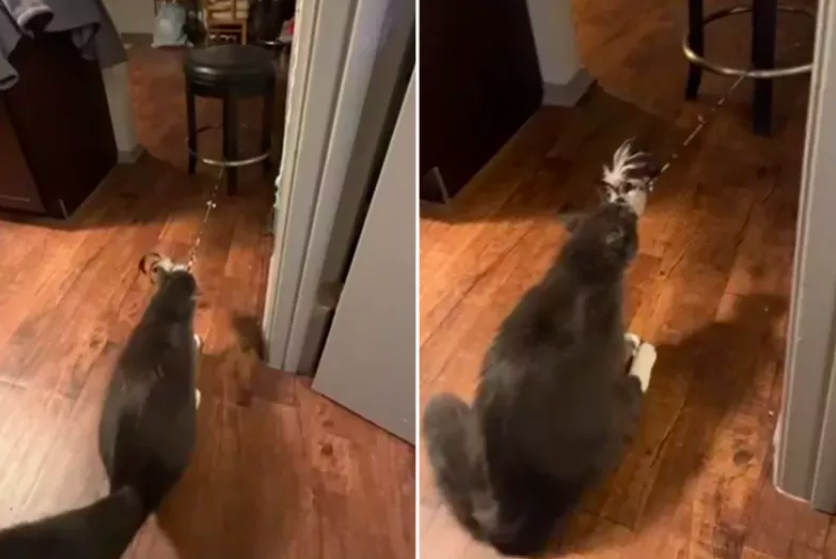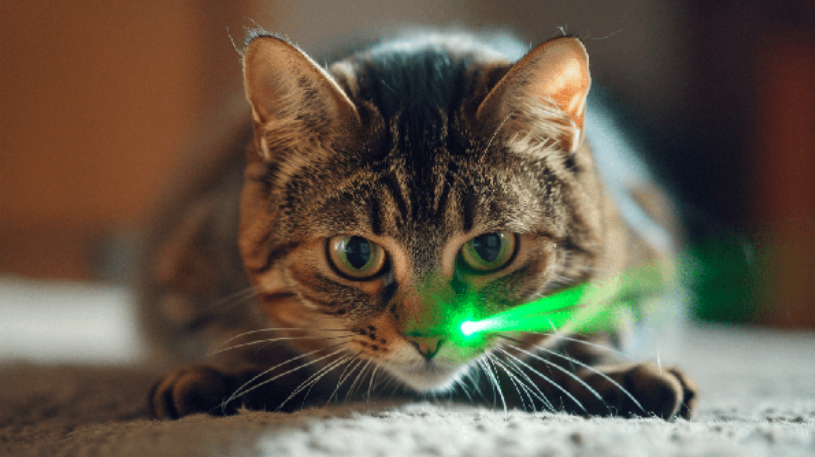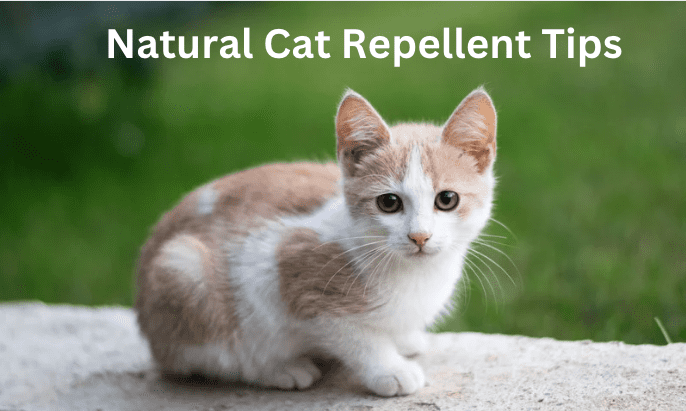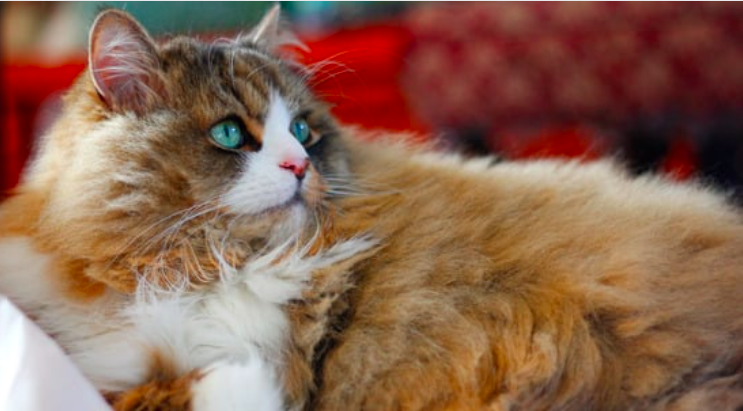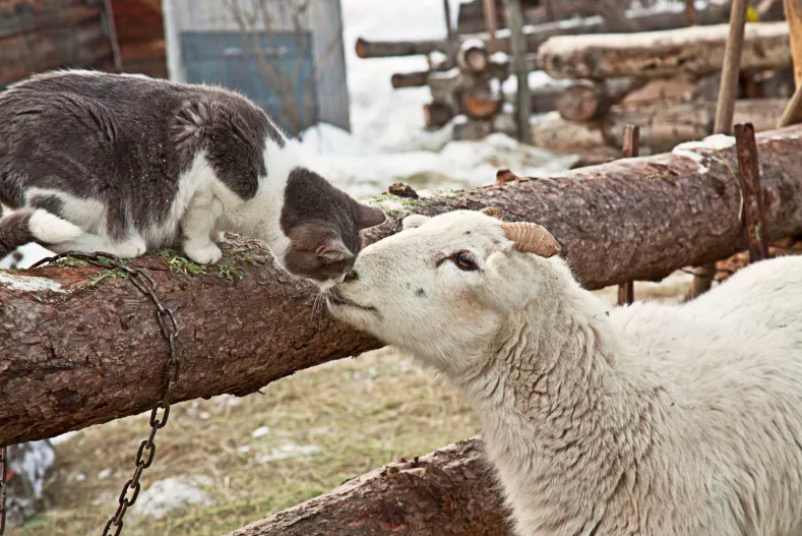Cats
Unveiling the Enigma of Lykoi Cats: A Unique Feline Breed
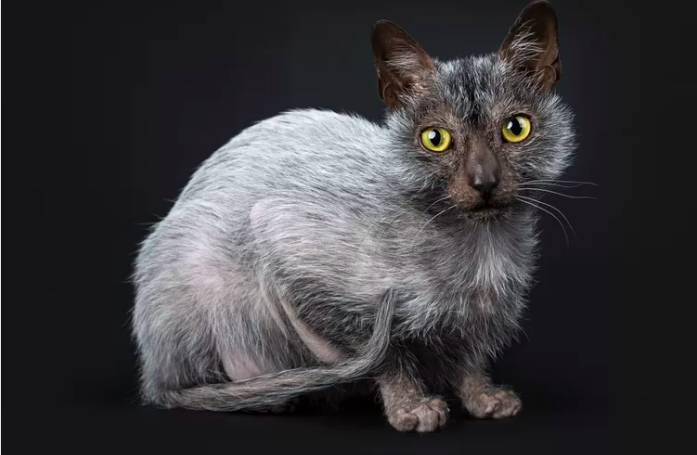
In the captivating world of feline companionship, there exists a breed that has left both cat enthusiasts and casual observers intrigued and mystified.
The Lykoi cat, often referred to as the “werewolf cat,” is a rare and enigmatic feline breed that has taken the internet by storm.
In this comprehensive guide, we will delve into the depths of the Lykoi cat’s fascinating characteristics, history, care requirements, and more.
By the end of this article, you’ll be well-versed in all things Lykoi and ready to embrace the charm of this bewitching breed.
What Exactly Is a Lykoi Cat?
A Glimpse of the Lykoi’s Appearance
The Lykoi cat, also known as the “werewolf cat,” stands as a true marvel of nature. Its appearance is undoubtedly one of its most defining features.
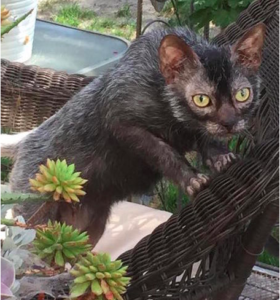
Imagine a feline companion with a coat that seems to be a patchwork of hair and bare skin, reminiscent of a creature from folklore.
These cats are often characterized by their scruffy and partially hairless coats, which can range from a striking silver-gray to a warm brown.
The fur appears thin, with some areas almost devoid of hair, giving them their distinctive and captivating appearance. It’s as if they carry a piece of mystery and enchantment in their very fur.
The Lykoi’s Unique Facial Features
Apart from their intriguing coats, Lykoi cats also possess a distinctive facial structure. Their eyes, often large and expressive, have a captivating intensity that seems to look right through you.
Their cheekbones are prominent, and their eyes are set deeply, creating an almost haunting yet enchanting gaze.
Another remarkable feature is their ear shape. Lykoi cats often have ears that are slightly tilted forward, adding to their mystique.
These unique facial characteristics combine to create a feline that seems to be a living embodiment of a mythical creature.
The Origin of the “Werewolf” Nickname
The Lykoi cat’s “werewolf” nickname is a nod to their striking resemblance to the legendary creatures of folklore. Their wild appearance, coupled with their captivating eyes, has led many to believe that they share a lineage with the creatures of the night.
However, it’s important to note that despite their appearance, Lykoi cats are not the result of crossbreeding with wild animals or genetic mutations associated with mythical beings. Their unique look is a result of natural genetic variation and selective breeding.
The Lykoi’s Fascinating Genetic Mutation
While the Lykoi cat’s appearance may suggest otherwise, their unique look is not due to a genetic mutation causing baldness. Instead, it’s a result of a natural genetic variation that affects the development of their fur.
This variation causes their hair follicles to be in different stages of growth, leading to the patchy, almost “werewolf-like” appearance.
In essence, Lykoi cats are not bald; they simply have a distinctive and captivating coat pattern that sets them apart from other feline breeds.
Now that we’ve explored the mesmerizing appearance of the Lykoi cat, let’s journey deeper into their history to uncover the intriguing story behind this extraordinary feline breed.
A Brief History of the Lykoi Cat
The journey of the Lykoi cat began in 2010 when two unrelated litters with similar unusual features were discovered in Tennessee, USA. This discovery marked the inception of a truly unique and captivating feline breed.

The Serendipitous Discovery
The Lykoi’s origin story is nothing short of serendipitous. In separate locations, two unrelated litters of kittens were born with strikingly similar features.
Their partially hairless coats and enchanting facial characteristics immediately caught the attention of cat enthusiasts and breeders.
Selective Breeding and the Quest for Preservation
Recognizing the uniqueness of these kittens, dedicated breeders embarked on a mission to preserve and propagate these distinctive traits while ensuring the cats’ overall health and well-being.
The breeders sought to create a robust and genetically diverse population of Lykoi cats.
Breeding the Mystique
The selective breeding process involved carefully pairing Lykoi cats with compatible mates to maintain their captivating appearance.
Over time, this deliberate effort resulted in a breed that retained its enigmatic allure while establishing a sustainable genetic lineage.
Recognition by Feline Associations
As Lykoi cats continued to captivate the hearts of feline enthusiasts, they gained recognition from various feline associations, including The International Cat Association (TICA).
This recognition marked a significant milestone in the breed’s journey, solidifying its place in the world of feline companionship.
A Breed with a Bright Future
Today, the Lykoi cat is a testament to the possibilities that lie within the realm of feline genetics. It is a breed that not only boasts a unique and bewitching appearance but also carries with it a remarkable tale of discovery and preservation.
As we delve deeper into the world of Lykoi cats, we’ll explore their fascinating personalities, delve into their care requirements, and address some common myths surrounding these captivating felines.
Join us on this journey to uncover the secrets and wonders of the Lykoi cat!
Lykoi Cat Personality and Temperament
Beyond their captivating appearance, Lykoi cats possess distinct personalities and temperaments that make them truly exceptional companions.
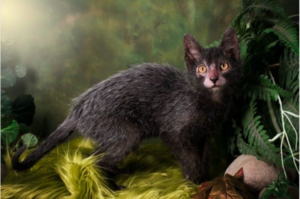
Affectionate and Loving
Lykoi cats are known for their friendly and affectionate nature. They often form strong bonds with their human companions, seeking out opportunities for cuddles and companionship.
This affectionate demeanor makes them wonderful additions to families and individuals seeking a loving feline companion.
Playful and Energetic
Despite their bewitching appearance, Lykoi cats are playful and energetic creatures. They have a penchant for interactive play and enjoy toys that stimulate their agile minds and bodies.
Engaging in playtime with your Lykoi cat is not only enjoyable but also a great way to build a deeper connection with them.
Intelligent and Curious
Lykoi cats are intelligent and curious by nature. They have a keen sense of exploration and are likely to investigate every nook and cranny of your home.
Providing them with puzzles and challenging toys can help satisfy their intellectual curiosity and keep them mentally stimulated.
Social and Inclusive
These captivating felines are known for their social nature. They often get along well with other pets, including dogs, as long as they are properly introduced and socialized from an early age.
Lykoi cats enjoy the company of their human family members and are likely to seek out interactions and affection.
Vocal and Communicative
Lykoi cats are not shy about expressing themselves. They are known to be quite vocal, engaging in chirps, meows, and purrs to communicate their desires and needs.
This vocal nature can make for lively and engaging conversations with your furry friend.
Adaptable and Resilient
Despite their unique appearance, Lykoi cats are adaptable and resilient. They tend to adjust well to different living environments and can thrive in various households.
Their robust nature ensures that they can lead healthy and fulfilling lives.
Caring for Your Lykoi Cat
Ensuring the well-being and happiness of your Lykoi cat requires special attention due to their distinctive appearance and unique coat. Let’s explore the essential aspects of caring for your captivating Lykoi companion.
Grooming and Skin Care
- Regular Baths and Skin Care Routine: While Lykoi cats may appear partially hairless, they still require regular grooming and skin care. Their unique coats can accumulate dirt and oils, so it’s crucial to establish a consistent grooming routine. Gently bathe your Lykoi cat with a mild, cat-friendly shampoo to keep their skin clean and healthy. Pay special attention to the areas with less fur, such as the face and paws.
- Moisturizing for Comfort: To prevent dryness and discomfort, consider applying a cat-safe moisturizer to their skin. Consult with your veterinarian for recommendations on suitable products to maintain their skin’s health.
Nutrition
- Balanced Diet for Optimal Health: Feeding your Lykoi cat a balanced and high-quality diet is paramount to their overall health. Consult with your veterinarian to determine the best dietary plan for your furry friend. Specialized diets that support skin and coat health may be beneficial for Lykoi cats due to their unique coat structure.
- Hydration is Key: Ensure your Lykoi cat has access to fresh and clean water at all times. Proper hydration is essential for their well-being and can help maintain the health of their skin and coat.
Exercise and Playtime
- Interactive Play for Stimulation: Like all cats, Lykoi cats benefit from regular exercise and playtime. Interactive toys, feather wands, and puzzle feeders can keep them mentally and physically stimulated. Engaging in play with your Lykoi cat helps prevent boredom and encourages a healthy lifestyle.
- Designated Play Areas: Consider creating designated play areas in your home where your Lykoi cat can climb, explore, and scratch. Providing a variety of entertainment options will keep them engaged and satisfied.
Veterinary Care
- Regular Check-ups and Vaccinations: While Lykoi cats are generally healthy, they are not immune to common feline health issues. Regular veterinary check-ups are essential to monitor their overall health and address any concerns promptly. Vaccinations and preventive care can help ensure a long and happy life for your furry companion.
Love and Attention
Above all, Lykoi cats thrive on love and attention from their human family members. Spend quality time with your feline friend, offer affection, and create a strong bond through regular interactions. Your love and care are essential for their happiness and well-being.
By providing proper grooming, nutrition, exercise, and affection, you can ensure that your Lykoi cat enjoys a comfortable and fulfilling life.
Health Considerations
While Lykoi cats are generally hardy and resilient, like any other breed, they are susceptible to certain health considerations. Here, we’ll explore some important aspects of their well-being.
Regular Veterinary Check-ups
Routine veterinary check-ups are essential to monitor the overall health of your Lykoi cat. Regular visits to the vet can help detect and address any potential health issues early, ensuring a long and happy life for your feline companion.
Vaccinations and Preventive Care
Ensure that your Lykoi cat receives all necessary vaccinations and preventive care recommended by your veterinarian. These measures help protect them from common feline diseases and ensure their immune system is strong and resilient.
Dental Health
Dental care is crucial for Lykoi cats. Like all cats, they can develop dental issues if proper oral hygiene is not maintained. Regular teeth brushing and dental check-ups are essential to keep their teeth and gums healthy.
Parasite Control
Like all cats, Lykoi cats can be susceptible to parasites such as fleas, ticks, and intestinal worms. Regular parasite prevention measures, as recommended by your veterinarian, are essential to keep them parasite-free.
Spaying and Neutering
Spaying or neutering your Lykoi cat is not only responsible but also contributes to their overall health and well-being. It helps prevent unwanted pregnancies and can reduce the risk of certain health issues.
Genetic Health
While Lykoi cats are not prone to specific genetic health problems associated with their unique coat, responsible breeding practices are essential to maintain their overall health and appearance.
Ensure that you acquire your Lykoi cat from a reputable breeder who prioritizes the breed’s well-being.
By staying attentive to your Lykoi cat’s health and providing proper care, you can help ensure they lead a happy and healthy life. Regular veterinary care, a balanced diet, and a loving home environment are key to the well-being of these captivating feline companions.
Now that we’ve covered their health requirements, let’s address some common myths and misconceptions surrounding these captivating felines to dispel any misunderstandings. Join us as we debunk the myths of the Lykoi cat.
Lykoi Cat Myths Debunked
Despite their captivating and unique appearance, Lykoi cats have been the subject of several myths and misconceptions. Let’s unravel the truth behind these intriguing felines by debunking some common myths.
They Are Not Dangerous
- Myth: Due to their “werewolf” appearance, some may assume that Lykoi cats are dangerous or aggressive.
- Fact: Lykoi cats are not dangerous. They have friendly and affectionate personalities, much like other domestic cat breeds. Their appearance may be unconventional, but their temperament is typically loving and gentle.
They Are Not Allergic to Humans
- Myth: It’s commonly believed that Lykoi cats are allergic to humans, contributing to their unique appearance.
- Fact: Lykoi cats are not allergic to humans. Their distinctive coat pattern has nothing to do with allergies. Instead, it’s a result of natural genetic variation and selective breeding.
They Are Not Wild Hybrids
- Myth: Some may think that Lykoi cats are wild hybrids, possibly mixed with wildcat species.
- Fact: Lykoi cats are not wild hybrids. Their unique appearance is the result of a natural genetic variation that affects the development of their fur. They have no direct lineage to wildcat species.
They Don’t Carry Magical Powers
- Myth: Because of their mystique, some may believe that Lykoi cats possess supernatural or magical powers.
- Fact: Lykoi cats do not possess magical powers. While they have a captivating appearance, they are regular domestic cats with no mystical abilities. Their charm lies in their unique appearance and endearing personalities.
They Don’t Bring Bad Luck
- Myth: Similar to black cats, Lykoi cats are sometimes associated with superstitions and considered bringers of bad luck.
- Fact: Lykoi cats, like all other feline companions, are not bringers of bad luck. Superstitions regarding cat colors or breeds have no scientific basis. They are loving and wonderful companions, and their presence can bring joy and companionship.
They Don’t Require Special Feeding
- Myth: It’s a misconception that Lykoi cats require a special diet due to their unique coat.
- Fact: Lykoi cats do not require a specialized diet. A high-quality, well-balanced cat food is sufficient to meet their nutritional needs. Consult with your veterinarian for specific dietary recommendations based on your Lykoi cat’s individual requirements.
By dispelling these myths, we can better appreciate the Lykoi cat for what they truly are: captivating, unique, and wonderful companions.
Now that we’ve clarified these misconceptions, let’s explore some frequently asked questions about Lykoi cats to provide you with even more valuable insights.
Conclusion
In conclusion, the Lykoi cat is a captivating and unique feline breed that has captured the hearts of many cat lovers worldwide.
Their distinctive appearance, coupled with their friendly and affectionate nature, makes them a wonderful addition to any family. By providing proper care and attention, you can enjoy the company of a remarkable and enchanting Lykoi cat for years to come.
Now that you’re well-informed about the world of Lykoi cats, consider adopting one of these extraordinary creatures and embark on a one-of-a-kind feline journey!
Questions People Also Ask: (FAQs)
Can I Adopt a Lykoi Cat at My Local Shelter?
Lykoi cats are rare, and you’re unlikely to find them at most local shelters. You may need to contact breed-specific rescues or reputable breeders.
Are Lykoi Cats High-Maintenance?
A2: While they require regular grooming and attention to their skin, Lykoi cats are not excessively high-maintenance compared to other breeds.
Do Lykoi Cats Get Along with Other Pets?
Lykoi cats typically get along well with other pets, including dogs, as long as they are properly introduced and socialized.
Are Lykoi Cats Good for Allergy Sufferers?
While no cat breed is entirely hypoallergenic, some allergy sufferers find that they can tolerate Lykoi cats better than other breeds due to their unique coat.
What Is the Lifespan of a Lykoi Cat?
Lykoi cats have a similar lifespan to other domestic cats, averaging between 12 to 16 years with proper care.
Can I Show My Lykoi Cat in Cat Shows?
Yes, Lykoi cats are eligible for cat shows, and they often capture the attention of judges with their distinctive appearance.
Where Can I Find a Reputable Lykoi Cat Breeder?
To ensure you are getting a healthy and well-cared-for Lykoi cat, it’s essential to research and choose a reputable breeder who adheres to ethical breeding practices.
We appreciate you for taking the time to read this article!
Finally, we hope you found this article interesting? And what do you think about ”Unveiling the Enigma of Lykoi Cats: A Unique Feline Breed!?”
Please feel free to share or inform your friends about this article and this site, thanks!
And let us know if you observe something that isn’t quite right.
Cats
Clever Cats: Breeds That Learn Fast
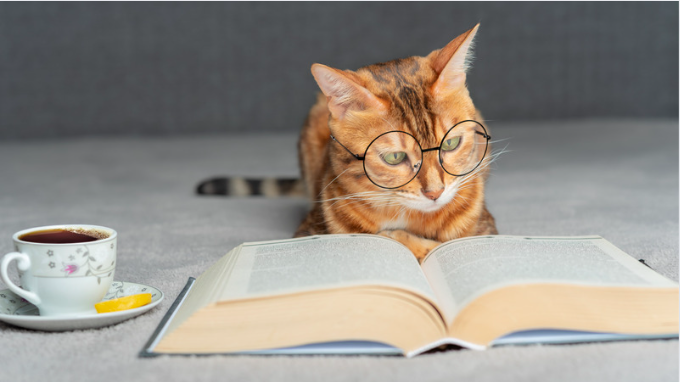
Clever Cats: Breeds That Learn Fast
Cats have always fascinated us with their agility, independence, and sometimes enigmatic behavior. Among the vast array of feline breeds, some stand out for their remarkable intelligence and ability to learn quickly.
In this article, we will delve into the world of these exceptional cat breeds, exploring their unique characteristics, training capabilities, and what makes them such quick learners.
Whether you’re a seasoned cat owner or considering adopting a new feline friend, this comprehensive guide will help you understand the breeds that are not only intelligent but also a joy to train.
Why Intelligence Matters in Cats
Understanding Feline Intelligence
Feline intelligence is a multi-faceted trait that encompasses problem-solving abilities, social learning, and adaptability. Unlike dogs, cats often showcase their intelligence in more subtle ways, such as manipulating objects to get what they want or learning routines and commands.
Benefits of Owning Intelligent Cats
Owning an intelligent cat comes with several benefits. These cats are more interactive and engaging, making them excellent companions. They can learn tricks, follow commands, and even understand basic household rules, which makes living with them more enjoyable and less challenging.
Top Cat Breeds Known for Their Intelligence
Abyssinian
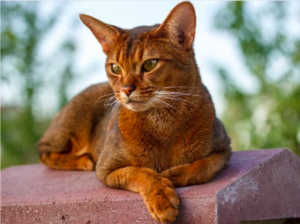
Overview
The Abyssinian is often hailed as one of the smartest cat breeds. Known for their curiosity and playful nature, Abyssinians are quick learners who thrive on mental stimulation.
Training and Activities
Abyssinians are highly trainable and enjoy interactive toys and puzzle feeders. They can learn tricks such as fetching and even walking on a leash. Their love for heights means they appreciate cat trees and climbing structures.
Siamese
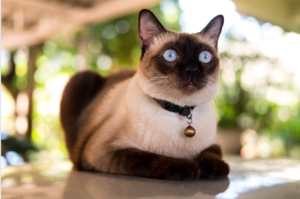
Overview
Siamese cats are not only intelligent but also highly vocal and sociable. They form strong bonds with their owners and are always eager to engage in activities.
Training and Activities
Siamese cats are quick to learn tricks and commands. They enjoy interactive play and can be trained to perform simple tasks like opening doors or retrieving items. Their vocal nature also makes them responsive to verbal cues.
Bengal
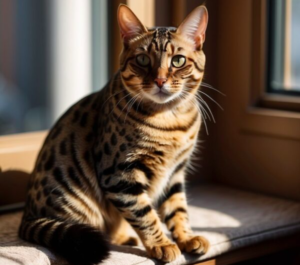
Overview
Bengals are known for their striking appearance and high energy levels. Their intelligence is reflected in their ability to solve problems and learn complex tasks.
Training and Activities
Bengals enjoy activities that challenge their minds, such as agility courses and puzzle toys. They can be trained to walk on a leash and perform tricks. Providing them with interactive playtime helps in channeling their energy positively.
Burmese
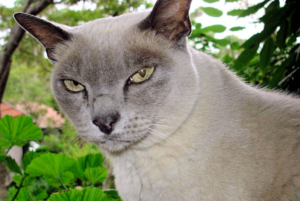
Overview
Burmese cats are affectionate, people-oriented, and intelligent. They enjoy being involved in family activities and can be trained to follow various commands.
Training and Activities
Burmese cats are quick learners and respond well to positive reinforcement. They enjoy learning tricks, playing fetch, and interactive games that stimulate their minds.
Scottish Fold
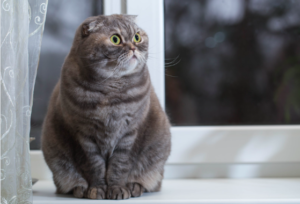
Overview
Scottish Folds are known for their distinctive folded ears and sweet demeanor. Despite their calm appearance, they are intelligent and can learn quickly.
Training and Activities
Scottish Folds enjoy interactive toys and games. They can learn tricks and commands and appreciate routines that keep their minds engaged.
Training Tips for Intelligent Cats
Start Early
Begin training your cat as early as possible. Kittens are more receptive to learning new behaviors and routines.
Use Positive Reinforcement
Reward your cat with treats, praise, or playtime whenever they successfully perform a desired behavior. Positive reinforcement strengthens the association between the action and the reward.
Keep Sessions Short and Fun
Cats have shorter attention spans than dogs, so keep training sessions brief and enjoyable. Incorporate playtime to make learning fun for your cat.
Be Patient and Consistent
Patience and consistency are key when training cats. Repeat commands and routines regularly, and avoid punishing your cat for mistakes. Consistency helps reinforce learning and builds trust.
Challenges of Training Intelligent Cats
Independence and Stubbornness
Intelligent cats can sometimes be independent and stubborn. They might choose to ignore commands if they are not in the mood, so it’s important to understand their behavior and work with it.
Need for Mental Stimulation
Highly intelligent cats require constant mental stimulation. Boredom can lead to behavioral issues, so ensure they have plenty of toys, activities, and interaction to keep their minds engaged.
Managing High Energy Levels
Breeds like Bengals have high energy levels that need to be managed. Providing them with enough physical and mental exercise is crucial to prevent destructive behavior.
Living with Intelligent Cats
Creating an Enriched Environment
An enriched environment is essential for intelligent cats. This includes a variety of toys, climbing structures, scratching posts, and interactive feeders to keep them stimulated.
Social Interaction
Intelligent cats thrive on social interaction. Spend quality time playing, training, and simply bonding with your cat to ensure they feel valued and engaged.
Understanding Their Needs
Each intelligent breed has its own unique needs and preferences. Understanding these and catering to them will help you build a strong and positive relationship with your cat.
Conclusion
Owning an intelligent cat can be an incredibly rewarding experience. These quick learners bring joy, challenge, and companionship to their owners. By understanding their unique characteristics and providing the right environment and training, you can foster a deep and fulfilling relationship with your feline friend.
Whether you choose an Abyssinian, Siamese, Bengal, Burmese, or Scottish Fold, you’re sure to enjoy the remarkable intelligence and personality they bring into your home.
Frequently Asked Questions (FAQs)
What makes a cat breed intelligent?
Intelligent cat breeds often show high levels of problem-solving abilities, adaptability, and social learning. They can quickly learn commands, tricks, and routines.
Can all cats be trained?
While some breeds are more receptive to training than others, all cats can be trained to some extent. Patience, consistency, and positive reinforcement are key to successful training.
What are the best toys for intelligent cats?
Interactive toys, puzzle feeders, and climbing structures are ideal for intelligent cats. These toys provide mental stimulation and keep them engaged.
How do I keep my intelligent cat from getting bored?
Provide a variety of toys, engage in regular playtime, and introduce new activities regularly. Rotating toys and creating an enriched environment also help prevent boredom.
Are intelligent cats more difficult to care for?
Intelligent cats can be more demanding in terms of mental stimulation and interaction. However, with the right approach and environment, they can be delightful companions.
We appreciate you for taking the time to read this article!
Finally, we hope you found this article interesting? And what do you think about ”Clever Cats: Breeds That Learn Fast!?”
Please feel free to share or inform your friends about this article and this site, thanks!
And let us know if you observe something that isn’t quite right.
Cats
The Enchanting Scottish Fold: A Guide to the Adorable Feline with Folded Ears
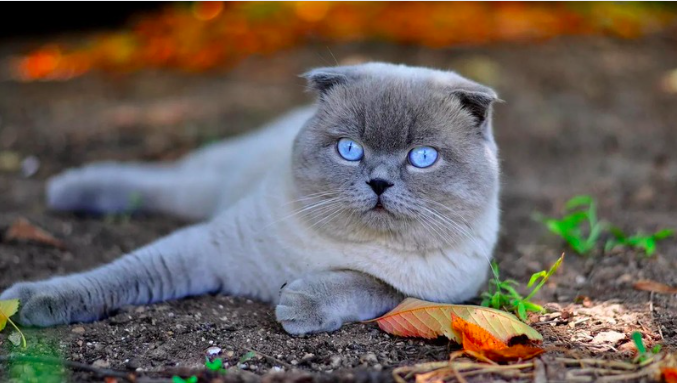
The Enchanting Scottish Fold: A Guide to the Adorable Feline with Folded Ears
Welcome to the world of the Scottish Fold cat, where charm and curiosity meet in an irresistibly adorable package. With their distinctive folded ears and sweet expression, Scottish Folds have captured the hearts of cat lovers around the world. Originally hailing from Scotland, these cats are known for their gentle demeanor, playful nature, and loving personality.
In this comprehensive guide, we will delve into the fascinating world of Scottish Fold cats, exploring their history, physical characteristics, personality traits, and care requirements. Whether you’re a seasoned cat owner or considering adding a feline friend to your family, the Scottish Fold’s unique charm and affectionate nature make them a delightful addition to any home. Join us as we unravel the enchanting tale of the Scottish Fold cat and discover why they are such beloved companions.
Fold
Overview
The Scottish Fold cat is a charming and distinctive breed known for its unique folded ears and sweet expression. Originating from Scotland in the 1960s, these cats have captured the hearts of many with their endearing appearance and affectionate nature. Scottish Folds are known for their gentle and loving temperament, making them wonderful companions for families and individuals alike.
History and Origins
The Scottish Fold breed traces its roots back to a white barn cat named Susie, who was found in Scotland in the early 1960s. Susie had a unique genetic mutation that caused her ears to fold forward, giving her an owl-like appearance. This trait was passed down to her kittens, and thus, the Scottish Fold breed was born. The breed quickly gained popularity for its distinctive look and friendly demeanor, and it was officially recognized by cat registries in the 1970s.
Physical Characteristics
- Folded Ears: The most distinctive feature of the Scottish Fold is its folded ears, which give the cat a sweet and owl-like appearance. Not all Scottish Folds have folded ears; some may have straight ears, known as “straights,” which are also common in the breed.
- Coat and Colors: Scottish Folds can have either a short or long coat, both of which are dense and plush. They come in a variety of colors and patterns, including tabby, tortoiseshell, and solid colors like white, black, and blue.
- Body Structure: Scottish Folds are medium-sized cats with a rounded appearance. They have sturdy bodies, round faces, and large, expressive eyes that give them a sweet and gentle expression.
Personality and Behavior
Scottish Folds are known for their calm and laid-back demeanor. They are affectionate cats that enjoy being around people and are often described as “lap cats” due to their love of cuddling. They are also known for their playful nature and enjoy interactive toys and games. Scottish Folds are generally good with children and other pets, making them a great choice for families.

Health and Care
- Ear Care: Due to their folded ears, Scottish Folds may be prone to ear infections. It’s important to regularly check and clean their ears to prevent issues.
- Grooming: Scottish Folds have dense coats that require regular grooming to prevent matting and tangling. Weekly brushing is usually sufficient to keep their coat in good condition.
- Health Concerns: Scottish Folds are generally healthy, but they may be prone to certain genetic conditions, including a skeletal disorder known as osteochondrodysplasia. Responsible breeding practices can help minimize the risk of these health issues.
Training and Activities
Scottish Folds are intelligent cats that can be trained to perform tricks and commands. They enjoy interactive play and benefit from toys that stimulate their minds and bodies. Providing them with scratching posts and other outlets for their natural behaviors can help keep them happy and healthy.
Compatibility with Families and Other Pets
Scottish Folds are known for their gentle and affectionate nature, making them great companions for families. They are good with children and other pets, including dogs, and can adapt well to different environments. Their loving and sociable nature makes them a popular choice for households looking for a friendly and affectionate pet.
Conclusion
The Scottish Fold cat is a unique and charming breed known for its folded ears and sweet expression. With their gentle demeanor and affectionate nature, Scottish Folds make wonderful companions for families and individuals alike. Whether you’re looking for a lap cat to cuddle with or a playful friend to keep you entertained, the Scottish Fold cat is sure to bring joy and companionship to your home.
FAQs about Scottish Fold Cats
Why do Scottish Folds have folded ears?
Scottish Folds have a genetic mutation that affects the cartilage in their ears, causing them to fold forward. This unique trait gives them their distinctive appearance.
Are Scottish Folds prone to ear problems due to their folded ears?
Yes, Scottish Folds may be more prone to ear infections due to the fold in their ears, which can trap dirt and moisture. Regular cleaning and monitoring of their ears can help prevent issues.
Do Scottish Folds have any health issues associated with their folded ears?
Scottish Folds may be prone to a condition called osteochondrodysplasia, which affects the development of their cartilage and bones. Responsible breeding practices can help reduce the risk of this condition.
Are Scottish Folds good with children and other pets?
Scottish Folds are known for their gentle and friendly nature, making them good companions for families with children and other pets. They enjoy socializing and being part of the family.
Do Scottish Folds require a lot of grooming?
Scottish Folds have dense coats that require regular grooming to prevent matting and tangles. Weekly brushing is recommended to keep their coat in good condition.
We appreciate you for taking the time to read this article!
Finally, we hope you found this article interesting? And what do you think about ”The Enchanting Scottish Fold: A Guide to the Adorable Feline with Folded Ears!?”
Please feel free to share or inform your friends about this article and this site, thanks!
And let us know if you observe something that isn’t quite right.
Cats
The Enchanting Burmese Cat: Affectionate, Playful, and Loyal
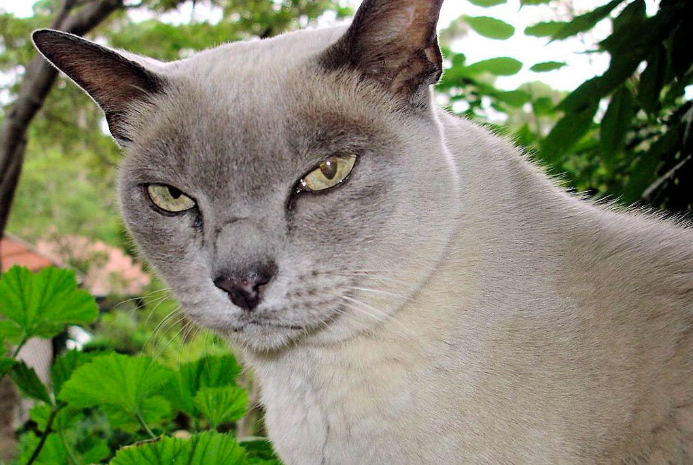
The Enchanting Burmese Cat: Affectionate, Playful, and Loyal
Enter the world of the Burmese cat, where elegance meets affection in a charming feline companion. Originating from the temples of Burma, these cats have captured the hearts of cat lovers worldwide with their striking appearance and loving nature. With their sleek coats, expressive eyes, and playful demeanor, Burmese cats are not just pets; they are cherished members of the family.
In this comprehensive guide, we delve into the captivating world of Burmese cats, exploring their history, physical characteristics, personality traits, and care requirements. Whether you’re a seasoned cat owner or considering adding a feline friend to your family, the Burmese cat’s unique blend of beauty, intelligence, and affection is sure to captivate you. Join us as we unravel the enchanting tale of the Burmese cat and discover why they are such beloved companions.
Burmese
Overview
The Burmese cat is a breed known for its striking appearance and affectionate nature. Originating from Burma (now Myanmar), these cats are renowned for their sleek, muscular bodies, expressive eyes, and silky coats. Burmese cats are often described as “people-oriented,” as they form strong bonds with their human companions and enjoy being part of the family. Their playful and curious nature makes them delightful companions for both children and adults alike.
History and Origins
The history of the Burmese cat can be traced back to ancient Burma, where they were considered sacred and kept by monks in temples. They were later brought to the West in the early 20th century and quickly gained popularity for their striking appearance and affectionate personality. The breed has since become a favorite among cat enthusiasts worldwide, known for its loving and loyal nature.
Physical Characteristics
- Coat and Colors: Burmese cats have short, sleek coats that lie close to the body. They come in a variety of colors, including sable, champagne, blue, and platinum. The coat is soft and silky to the touch, adding to the breed’s overall charm.
- Body Structure: Burmese cats are medium-sized with a muscular build. They have rounded heads, large, expressive eyes, and short, straight noses. Their compact bodies give them a sturdy appearance, and they move with grace and agility.
- Eyes and Ears: Their eyes are one of their most striking features, being large, expressive, and usually a deep, rich color that complements their coat. Their ears are medium-sized, slightly rounded at the tips, and set wide apart on the head.
Personality and Behavior
Burmese cats are known for their affectionate and sociable nature. They are often described as “dog-like” due to their tendency to follow their owners around the house and seek out human companionship. They are also highly intelligent and enjoy interactive play, making them great companions for families with children or other pets.
In addition to their affectionate nature, Burmese cats are also known for their vocalizations. They have a soft, sweet voice that they use to communicate with their owners, often engaging in “conversations” and expressing their needs and desires.

Health and Care
- Grooming: Burmese cats have short coats that require minimal grooming. Weekly brushing is usually sufficient to remove loose hair and keep their coat shiny. They also benefit from regular dental care to prevent oral health issues.
- Diet: A high-quality, balanced diet is essential for maintaining the health and vitality of Burmese cats. They should be fed a diet that is appropriate for their age, size, and activity level to ensure they receive the nutrients they need.
- Health Concerns: Burmese cats are generally healthy, but they can be prone to certain genetic conditions such as hypertrophic cardiomyopathy (HCM) and diabetes. Regular veterinary check-ups and a healthy diet can help manage these risks.
Training and Activities
Burmese cats are intelligent and can be trained to perform various tricks and commands. They enjoy interactive play and thrive on mental stimulation. Providing them with toys, puzzle feeders, and opportunities for play can help keep them entertained and prevent boredom.
Compatibility with Families and Other Pets
Burmese cats are known for their loving and social nature, making them great companions for families. They get along well with children and other pets, including dogs, as long as they are properly introduced. Their affectionate demeanor and playful nature make them a popular choice for households looking for a friendly and engaging pet.
Conclusion
The Burmese cat is a breed beloved for its affectionate nature, striking appearance, and playful personality. Whether you are looking for a loyal companion or a playful friend, the Burmese cat is sure to bring joy and warmth to your home. With their loving nature and sociable demeanor, Burmese cats make wonderful pets for families and individuals alike, enriching their lives with their presence and affection.
FAQs about Burmese Cats
What is the temperament of a Burmese cat like?
Burmese cats are known for their affectionate and social nature. They are often described as “dog-like” due to their loyalty and tendency to follow their owners around the house. They enjoy being involved in family activities and form strong bonds with their human companions.
Are Burmese cats good with children and other pets?
Yes, Burmese cats are generally good with children and other pets. They are playful and enjoy interactive play, making them great companions for families with children. They also get along well with other pets, including dogs, especially if they are introduced properly.
Do Burmese cats require a lot of grooming?
Burmese cats have short, sleek coats that require minimal grooming. Weekly brushing is usually sufficient to remove loose hair and keep their coat shiny. They also benefit from regular dental care to prevent oral health issues.
Are Burmese cats vocal?
Burmese cats are known for their soft, sweet voice, but they are not excessively vocal. They use their voice to communicate with their owners, often engaging in “conversations” and expressing their needs and desires.
What kind of environment is best for a Burmese cat?
Burmese cats thrive in environments where they have plenty of opportunities for play and interaction. They enjoy being part of the family and should have access to toys, scratching posts, and other enrichment activities. They also enjoy having access to outdoor enclosures or safe outdoor spaces where they can explore and indulge their natural instincts.
We appreciate you for taking the time to read this article!
Finally, we hope you found this article interesting? And what do you think about ”The Enchanting Burmese Cat: Affectionate, Playful, and Loyal!?”
Please feel free to share or inform your friends about this article and this site, thanks!
And let us know if you observe something that isn’t quite right.
-

 Pet Care2 years ago
Pet Care2 years agoThe Best Dog Collars For 2022
-

 Dogs2 years ago
Dogs2 years agoBichon Frise: The Happy, Playful, and Cuddly Companion
-

 Trending Pet Stories1 year ago
Trending Pet Stories1 year ago2023 ‘World’s Ugliest Dog’ Winner: Scooter’s Tale of Resilience
-

 Animals3 years ago
Animals3 years agoAre There Animals Having Down Syndrome?
-

 Pets2 years ago
Pets2 years agoThe Fascinating World Of The Red Chameleon
-

 Dogs3 years ago
Dogs3 years agoTop 10 Most Popular Dog Breeds According To AKC.
-

 Dogs3 years ago
Dogs3 years ago21 Dog Breeds That Resemble Bears Or Teddy Bears!
-

 Dogs3 years ago
Dogs3 years agoEskimo Dogs from Canada – What Are They? – Find Out!


